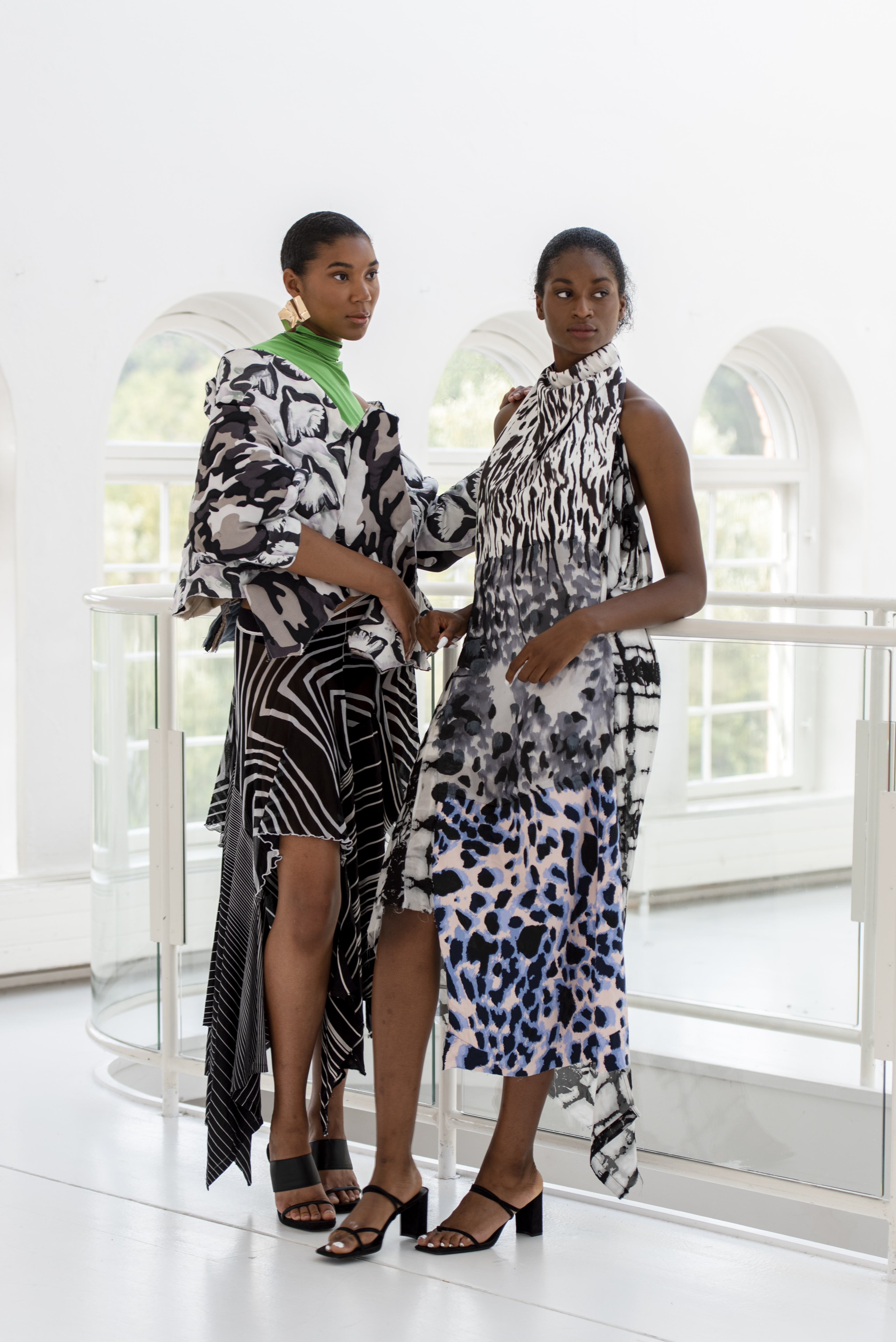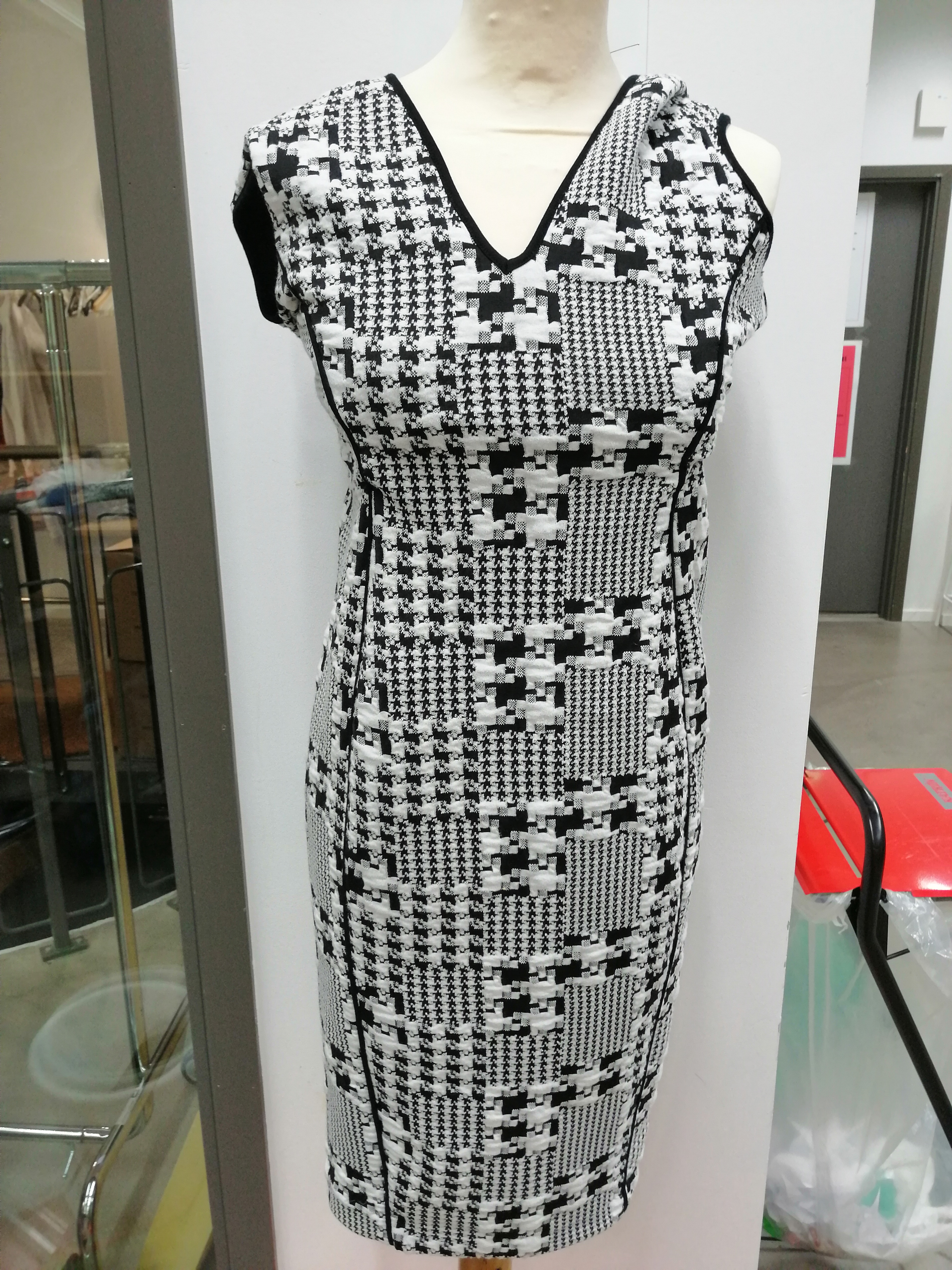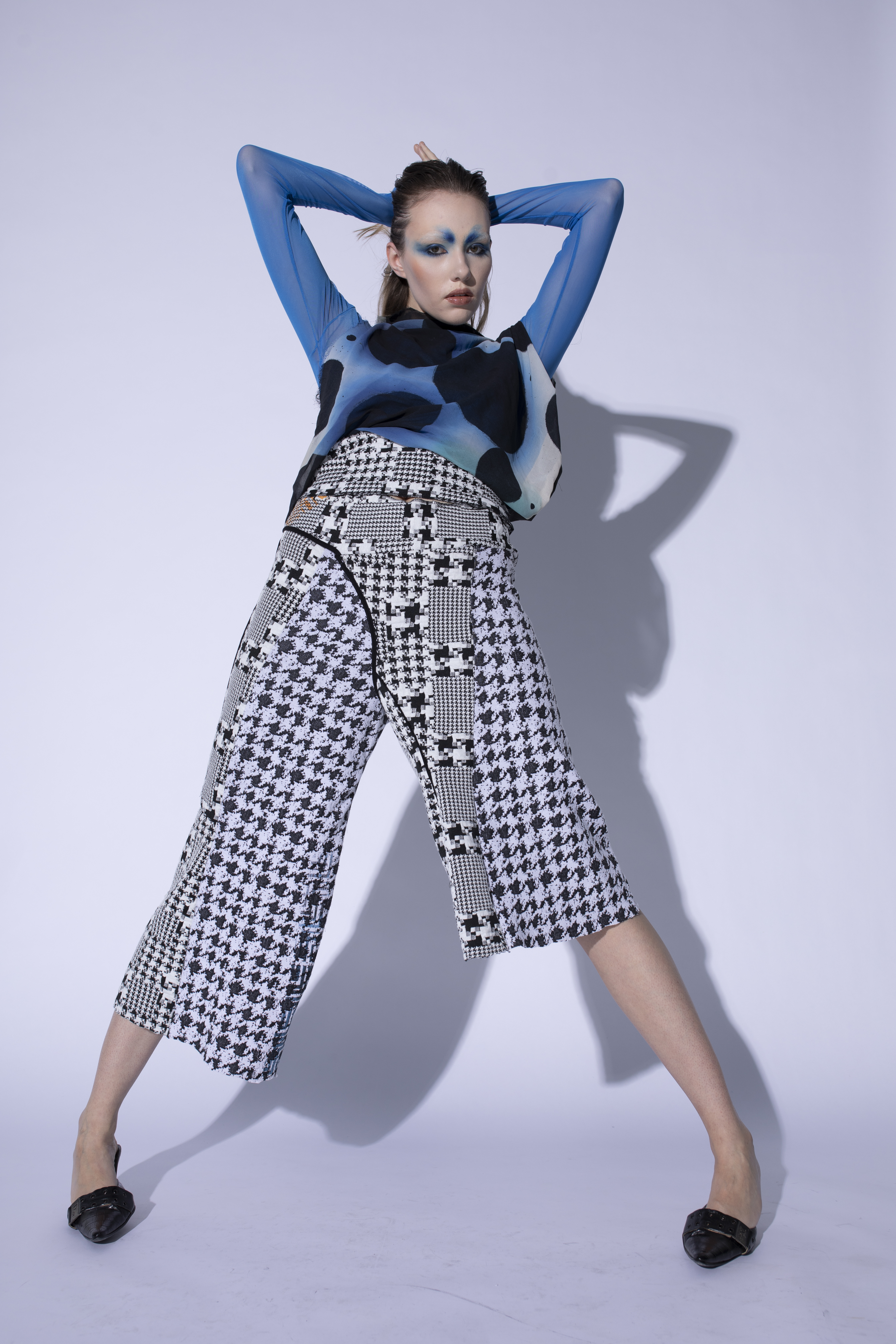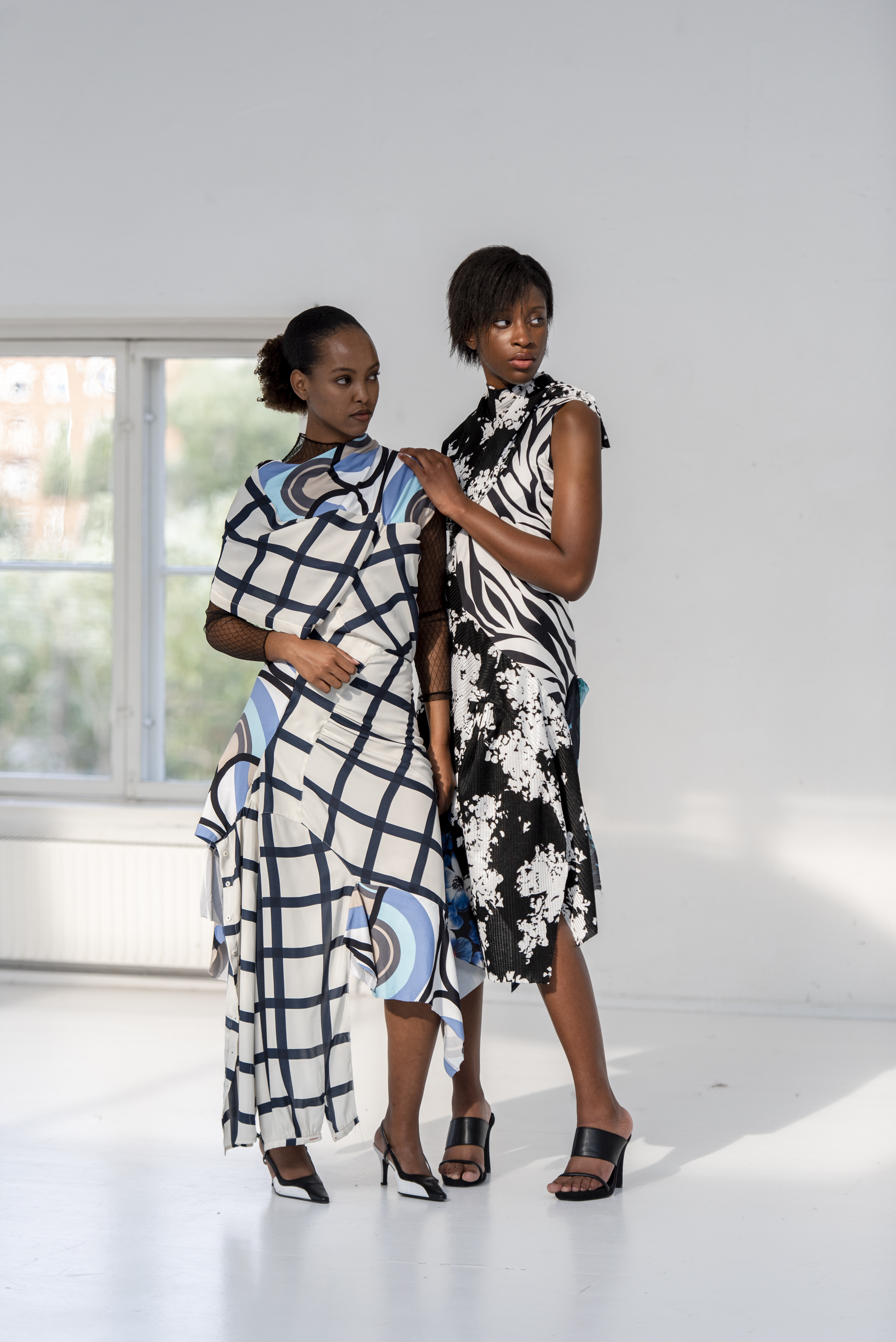
- Assembled Garments
- The Swedish School of Textiles student projects

This MA Fashion graduate collection developed research to foster new zero-waste recycling and garment re-construction methods without the use of a scissor. Traditional recycling practise of “destroying” is inevitable in order to create something new. Design methods applied investigate usage and how to create new form, while allowing a reconstructed garment to be reversed back to its original state. Within the collection of 8 outfits, there exist 26 transformable garments.
Materials are from second hand. The majority of garments consists of polyester and cotton blends.
Laerke Dramshoej, The Swedish School of Textiles.
The Assembled Garments project aims to be part of a long-term solution by being a 2-1 or 3-1 solution that has multiple garments embedded in the construction, thus designed to be disassembled into new renewal cycles and to fulfill consumers’ ever-changing needs. The potential of applying the method and potential business model to industrial garment production exists, as tons of fast fashion garments are produced daily.











All group objects:
Each decision during product development affects sustainability and circularity. To develop products with lower environmental impact, the design team needs to be well aware of each component and process, and their individual and combined effect on the final product and its longevity.
One challenge is having comprehensive knowledge regarding sutainability when it comes to all of the components and processes that are a part of the production and lifetime of the garment. An additional challenge is implementing alternative design methods that do not require virgin components. Ongoing research inspires and shows methods to re-make existing products to have new functionalities and designs with an upgraded look.
With higher traceability when it comes to materials, components, and processes, there are increased possibilities for more conscious decisions. If communicated well, this gives the consumer a better basis for decisions.